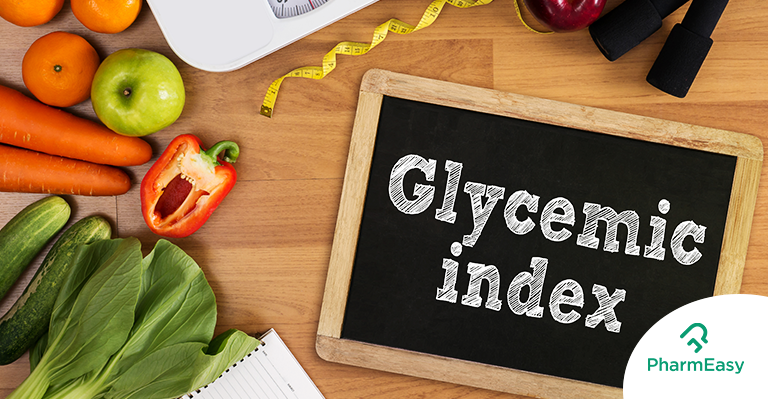Glycemic Index And Diabetes: What You Need To Know
By Dhwani Jerajani +2 more

Get more insightful and
helpful tips to
treat Diabetes for FREE



Download PharmEasy App




Register to Avail the Offer
Send OTPBy continuing, you agree with our Privacy Policy and Terms and Conditions
By Dhwani Jerajani +2 more
Diabetes is a metabolic disorder in which the body has trouble processing blood sugar efficiently. To keep control over blood sugar, people who have diabetes should eat foods that have a low glycemic index. Yes, the glycemic index and diabetes have a deep connection. But what is the ‘Glycemic Index’ and why is it important?
‘Glycemic Index’ is a value that food items are assigned by how quickly or slowly they increase the blood glucose. When something has a high glycemic index, it means that the food releases energy or glucose in the blood quickly and when some item has a low glycemic index, it means that glucose is released in the blood slowly and at a steady pace. In short, knowledge of the connection between the glycemic index and diabetes is imperative.

A low ‘Glycemic Index’ ensures that food is metabolized and assimilated better in the body. A ‘Glycemic Index’ value of 45 or less is considered ‘Low,’ 45-59 is considered ‘Moderate’ and a value above 60 is considered ‘High.’
Low glycemic index (GI of 55 or less): Most fruits and vegetables, beans, minimally processed grains, pasta, low-fat dairy foods, and nuts are preferred foods in diabetes.
Dr. M.G. Kartheeka, MBBS, MD
Also Read: Is Orzo Healthy? Your Guide to Understanding Its Nutritional Value
Refined and processed foods have a high glycemic index because they are bereft of any fibre and cannot resist the digestive enzymes at all. In fruits, the sugar is Fructose which takes longer to break down in the body. This is why fruits have a lower glycemic index and are a healthy option. Pasta has a glycemic index of 40-50, but it can be further reduced by keeping it more al dente. The longer you cook your pasta, the higher is its GI. Adding fat and acid to food also lowers its glycemic index. This is why adding a bit of ghee, lemon or a pickle to your meal is healthy. Proteins, when eaten with carbs, help reduce glucose levels as the combination promotes insulin secretion.
Also Read: 10 Glycemic Fruits for Diabetes
Always pay keen attention to the foods you consume. Foods with low Glycemic Index (GI): Green vegetables, most fruits, raw carrots and lentils. Medium GI: Sweet corn, bananas, raw pineapple, raisins, cherries, oat breakfast cereals, and multigrain, whole-grain wheat or rye bread. High GI: White rice, white bread and potatoes.
Dr. Ashish Bajaj – M.B.B.S, M.D.
Importance
Read More: 4 Best Foods for Diabetes
Links and product recommendations in the information provided here are advertisements of third-party products available on the website. PharmEasy does not make any representation on the accuracy or suitability of such products/services. Advertisements do not influence the editorial decisions or content. The information in this blog is subject to change without notice. The authors and administrators reserve the right to modify, add, or remove content without notification. It is your responsibility to review this disclaimer regularly for any changes.
Comments